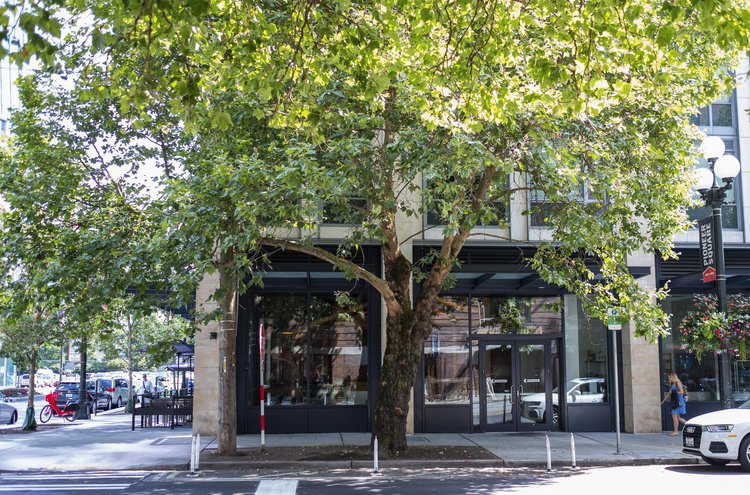Last updated on February 10th, 2025
Trees help clean the water flowing into streams, rivers and Puget Sound, help purify the air people breathe, lower the temperature of surrounding neighborhoods—and so much more. As Puget Sound cities and towns experience rapid growth, identifying opportunities to invest in high-impact tree planting and preservation projects is essential to ensuring people will continue to receive the multiple benefits of trees.
A coalition of local, regional and national partners came together to address this goal and develop a model for the Central Puget Sound region to target projects that maximize the benefits of the urban tree canopy. The three-year collaboration included The Nature Conservancy, Davey Expert Tree Company, American Forests and City Forest Credits and was funded by a grant from the USDA Forest Service Urban and Community Forestry Program, administered through the State of Washington Department of Natural Resources.

By approaching this from a regional lens, the Central Puget Sound partners were able to leverage resources to ensure that jurisdictions – regardless of their individual capacity – were able to access high-quality data and tools to understand their existing tree canopy and opportunities to invest in future tree canopy through a lens of ecosystem benefits, social equity and climate adaptation. In addition, a regional analysis provided an overall understanding of regional tree canopy distribution. After all, trees and forests do not care about city lines.
The Urban Tree Canopy Assessment Toolkit details the results of this effort and highlights a model that can be adapted and applied by other regions in Washington State and across the United States.
The Conservancy, Davey Tree, American Forests and City Forest Credits conducted an urban tree canopy assessment and incorporated into multiple tools, including: a planting prioritization based on ecosystem benefits, i-Tree Landscape and Tree Equity Score. To supplement these tools, the Northern Institute of Applied Climate Sciences produced a climate-adaptive tree species guide for the Puget Sound. To encourage and support community action, the City Forest Credits demonstrated how carbon financing can support urban forestry goals.
The products of this partnership can be used by urban forestry practitioners to target investments in urban tree planting and maintenance based on a variety of priorities, including looking at available planting space, equitable distribution of trees, stormwater benefits, and more. These tools can be used to communicate with decision makers using ecosystem service benefit and more.
Since these tools cross jurisdictional boundaries, the final products offer the opportunity for those in different jurisdictions to connect, learn from each other and even potentially collaborate on future analysis and projects.
Those looking to develop their own regional effort to understand urban canopy can look to this toolkit for Seven Steps to Building an Urban Tree Canopy Model. Core to this is connecting with partners with different types of expertise and connections.

Dig into the Urban Tree Canopy Assessment Toolkit to learn more, explore tools and check out all the different resources to support healthy urban trees!
Funds for this project were provided by the USDA Forest Service and Community Forestry Program, administered through the State of Washington Department of Natural Resources Urban and Community Forestry Program. The Nature Conservancy partnered with Davey Expert Tree Company, American Forests and City Forest Credits throughout the project.
This article originally appeared in The Nature Conservancy Washington’s Field Notes blog. If you have any questions or would like to discuss this work please connect with Hannah Kett, Urban Program Director at The Nature Conservancy – hannah.kett@tnc.org
Learn more about the economic, health, and climate benefits of urban trees by visiting U.S. Nature4Climate’s Decision-Makers Guide to Natural Climate Solutions.
